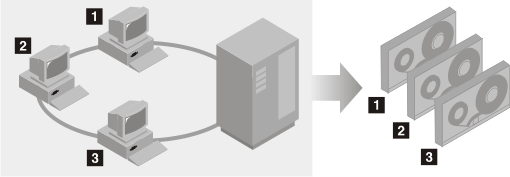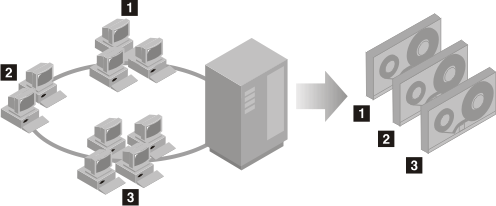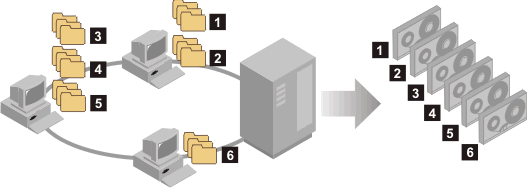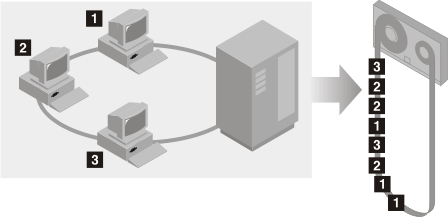Collocation reduces the number of volume mounts required when users restore, retrieve, or recall a large number of files from the storage pool. Collocation thus reduces the amount of time required for these operations.
About this task
With collocation enabled, the server tries to keep files on a minimal number of sequential-access storage volumes. The files can belong to a single client node, a group of client nodes, a client file space, or a group of file spaces. You can set collocation for each sequential-access storage pool when you define or update the pool.
Figure 1 shows an example of collocation by client node with three clients, each having a separate volume containing that client's data.

Figure 2 shows an example of collocation by group of client nodes. Three groups have been defined, and the data for each group is stored on separate volumes.

Figure 3 shows an example of collocation by file space group. Six groups have been defined. Each group contains data from file spaces that belong to a single node. The data for each group is stored on a separate volume.

When collocation is disabled, the server tries to use all available space on each volume before selecting a new volume. While this process provides better utilization of individual volumes, user files can become scattered across many volumes. Figure 4 shows an example of collocation disabled, with three clients sharing space on single volume.

With collocation disabled, more media mount operations might be required to mount volumes when users restore, retrieve, or recall a large number of files.
Collocation by group is the Tivoli® Storage Manager system default for primary sequential-access storage pools. The default for copy storage pools and active-data pools is no collocation.